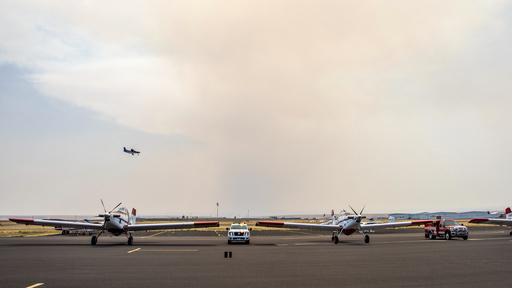Pilot Jim Maxwell, age 73, tragically lost his life in a plane crash while assisting firefighters in Malheur National Forest in Oregon on July 25. Maxwell, with nearly 25,000 flight hours under his belt, had a long and illustrious career flying small planes in risky situations, including battling wildfires across the Western United States. Despite facing serious burns in the 1980s during a mission in Central America, Maxwell remained dedicated to high-risk aviation missions well into his retirement years.
While the exact cause of the crash is still unknown, fellow pilots speculate that poor visibility may have played a role. Unlike commercial airline pilots who face mandatory retirement at 65, firefighting pilots like Maxwell can continue flying into their 60s and 70s due to their invaluable expertise and skills. These pilots are in high demand during wildfire season, with aerial firefighting efforts costing federal agencies over $700 million in 2023.
Aerial firefighting requires significant training, experience, and physical fitness. Pilots must pass annual physical exams and maintain a commercial pilot’s license. Despite the risks involved, pilots like Paul Yedinak, who is also 73 years old, continue to fly for the love of the job and the thrill of the challenge. Yedinak, along with Andy Taylor and Jason Maxwell, son of Jim Maxwell, emphasize the tight-knit community within aerial firefighting and the impact of Maxwell’s tragic crash on their community.
In honor of Maxwell, Oregon Gov. Tina Kotek ordered flags to be flown at half-staff, and a memorial service will be held post-fire season. Maxwell, flying an Air Tractor 802A, was known for his ability to drop fire retardant in challenging terrains inaccessible to larger aircraft. The crash that took Maxwell’s life serves as a stark reminder of the risks faced by aerial firefighters and the importance of prioritizing safety in hazardous conditions.


